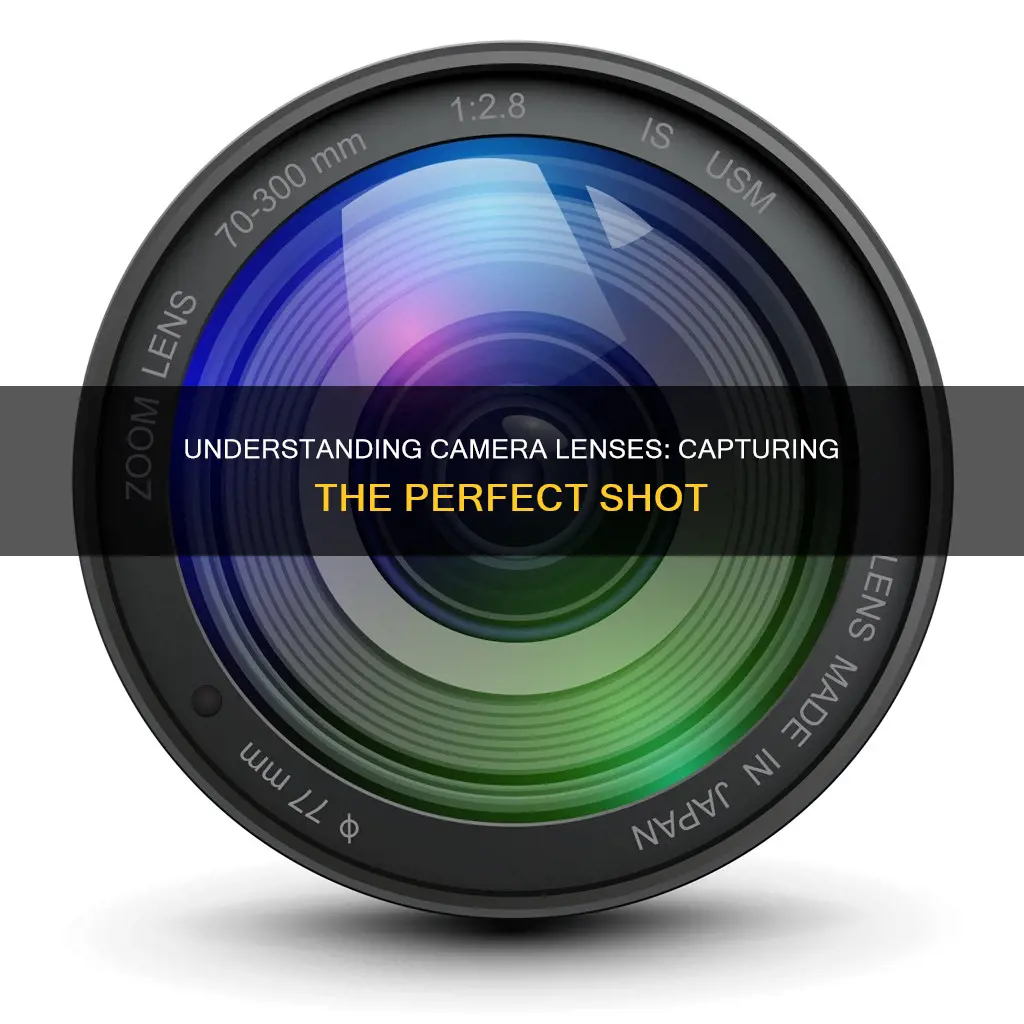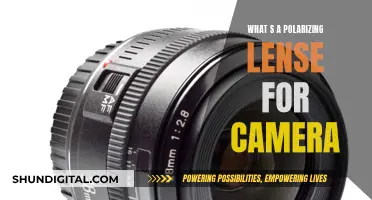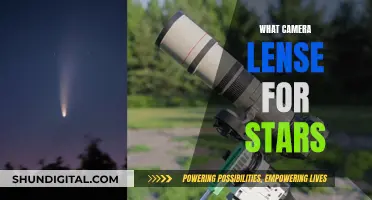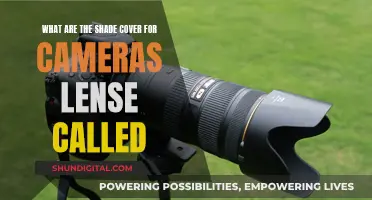
Camera lenses are an essential component of photography, allowing photographers to capture images of objects on photographic film or other media. They work similarly to the human eye, controlling the amount of light that enters the camera. The lens is what focuses light from what you see through the viewfinder into a tiny spot, usually 35mm, on the back of your film, DSLR, or mirrorless camera. The quality of the lens greatly impacts the resulting image.
Lenses can be categorised into two types: zoom lenses and prime lenses. Zoom lenses offer a range of focal lengths, making them versatile and ideal for travelling photographers. Prime lenses, on the other hand, have a fixed focal length, delivering superior image quality for specific types of photography.
Lenses with larger focal lengths are called telephoto lenses, while those with smaller focal lengths are wide-angle lenses. There are also specialty lenses like fish-eye and macro lenses, each designed for unique photographic needs.
| Characteristics | Values |
|---|---|
| Purpose | To focus light from what you see into a small spot on the back of your camera |
| Function | Used in conjunction with a camera body and mechanism to make images of objects either on photographic film or on other media capable of storing an image chemically or electronically |
| Focal length | The distance from the centre of the lens to the image focal point, measured in millimetres (mm) |
| Focal length types | Wide-angle, medium, telephoto |
| Focal length uses | Wide-angle: landscape photography, architecture photography, photos of the sky or Milky Way. Medium: portraiture, street photography, travel photography. Telephoto: sports photography, wildlife photography, other situations requiring magnification |
| Types | Zoom, prime, telephoto, wide-angle, macro, fisheye, soft-focus, swivel, shift, tilt/shift, telecentric |
| Aperture | The opening that allows light to enter and reach the camera's sensor, measured in F-numbers or F-stops |
| Aperture uses | A small F-number gives a sharp focal point with a blurry background. A larger F-number gives a larger depth of field, with both foreground and background in focus |
| Aperture and light | A small aperture lets more light through the lens, a large aperture lets less light through |
| Aperture and shutter speed | A small aperture requires a higher ISO or slower shutter speed to achieve the same exposure as a large aperture |
| Interchangeable | Some lenses are fixed, others are interchangeable |
| Compatibility | Lenses are designed for different camera bodies, so compatibility depends on the camera make and type |
What You'll Learn

Camera lenses are made from glass, plastic, or quartz glass
A camera lens is an optical lens or assembly of lenses that work with a camera body to capture images. The lens is what allows a camera to focus light from what you see through the viewfinder into a tiny spot, usually 35mm, on the back of your camera.
Camera lenses are made from a variety of materials, including glass, plastic, or quartz glass. Glass is the most common material used due to its good optical properties and resistance to scratching. However, other materials such as quartz glass, fluorite, plastics like acrylic (Plexiglass), and even germanium and meteoritic glass are also used.
Plastics allow for the manufacturing of strongly aspherical lens elements that are difficult or impossible to produce with glass. They simplify or improve lens manufacturing and performance, but are not typically used for the outermost elements of lenses due to their propensity to scratch easily. Plastic lenses are often found in cheap disposable cameras and are usually referred to as "optical resin" by quality lens manufacturers. However, modern high-performance lenses from popular manufacturers may include molded or hybrid aspherical plastic elements, demonstrating that plastic lenses can also be of high photographic quality.
The front element of a lens is critical to its performance. It is usually coated to reduce abrasion, flare, and surface reflectance, and to adjust the color balance. The curvature is typically set so that the angle of incidence and the angle of refraction are equal to minimize aberration.
Kit Lenses: The Basics of Camera Starter Kits
You may want to see also

Prime lenses have a fixed focal range
A camera lens is an essential component of a camera, as it is what focuses light from what you see through the viewfinder into a tiny spot, usually on the back of your film, DSLR, or mirrorless camera. The lens is what allows you to produce images, as without it, the only image you would be able to produce is white light.
Prime lenses are a type of camera lens with a fixed focal range, meaning that you cannot zoom in or out. They are a classic style of lens that has been around as long as cameras have. While this means that they are less versatile than zoom lenses, they have a number of advantages.
Firstly, they are often of superior optical quality, with wider maximum apertures. This allows for more light to enter the lens, which is ideal for low-light situations. The wider aperture also creates a shallower depth of field, allowing for a blurred background that makes the subject stand out. Prime lenses also tend to be lighter in weight and smaller in size, making them a beneficial choice when travelling.
The fact that prime lenses specialise in just one focal length means that they produce higher-quality images than zoom lenses. For example, the 50mm prime lens, also known as the "Nifty Fifty", is considered perfect for portraits as the focal length is seen to be as close to the human eye as possible. On the other hand, a 35mm prime lens is usually used by landscape photographers.
Overall, prime lenses offer a range of benefits, including improved image quality, low-light performance, and portability.
Testing Camera Lenses: A Step-by-Step Guide
You may want to see also

Zoom lenses are versatile and can be used for street and wildlife photography
A camera lens is an optical lens or assembly of lenses used with a camera to capture images on film or other media. Zoom lenses are a type of camera lens with variable focal lengths, allowing photographers to zoom in or out. They are incredibly versatile and can be used for street and wildlife photography.
Street Photography
Zoom lenses are a great choice for street photography as they offer a range of focal lengths, enabling photographers to quickly switch between different image effects. For instance, a photographer can easily shift from a 24mm to a 120mm focal length, creating a tighter image with a shallower depth of field. This telephoto effect allows for more intimate shots and adds variety to the photographer's work. Additionally, zoom lenses often have fast autofocus, which is beneficial for capturing candid shots on the street.
While some argue that prime lenses offer superior image quality, the difference is often minimal and may not be noticeable to most viewers. Zoom lenses, such as the popular 24-70mm (2.8), can produce sharp and high-quality images, especially with modern sensors and post-processing techniques. The convenience and flexibility of zoom lenses make them a preferred choice for many professional photographers.
Wildlife Photography
Zoom lenses are also ideal for wildlife photography, as they provide a range of focal lengths to capture different types of wildlife, from small creatures like butterflies to large mammals. These lenses offer the advantage of hand-holding, as opposed to bulkier prime lenses that often require a tripod. The ability to adjust focal length without changing lenses is particularly useful when photographing wild animals, as it allows photographers to react quickly and capture fleeting moments.
Budget-friendly zoom lenses, typically ranging from 100mm to 400mm or 600mm, are a popular choice for wildlife photography. While they may have slightly lower image quality and narrower apertures than prime lenses, they offer excellent value and versatility. For those seeking higher-end options, constant-aperture zoom lenses provide exceptional image quality but are generally more expensive and heavier.
In conclusion, zoom lenses offer a versatile solution for street and wildlife photography, providing a range of focal lengths, fast autofocus, and the convenience of not having to change lenses frequently. They are a great tool for photographers who want to explore different focal lengths and create diverse and dynamic images.
Vivitar Lenses: Compatible Cameras and Their Features
You may want to see also

Wide-angle lenses are good for landscape photography
A camera lens is an optical lens or assembly of lenses used in conjunction with a camera body to make images of objects. The lens is what focuses light from what you see through the viewfinder into a tiny spot on the camera's film or image sensor.
Wide-angle lenses are a must-have for landscape photographers. They have a wider field of view, allowing you to capture more of the scene in front of you than a standard zoom lens. This makes them perfect for photographing landscapes and architecture. Wide-angle lenses typically have a focal length between 16mm and 35mm, though some consider anything over 28mm to be too narrow for the "true" wide-angle look.
The wide field of view of wide-angle lenses makes it possible to capture sweeping vistas and dramatic skies. They also have a distinctive look and character, with exaggerated perspective and distortion that adds a sense of drama to images. The large depth of field of wide-angle lenses keeps everything in focus from the foreground to the horizon, and their inherent distortion helps to pull viewers into the composition.
When composing wide-angle landscape scenes, it's important to pay attention to the foreground. Wide-angle lenses excel when you get in close to foreground interest, creating dramatic perspective. Shapes are important; diagonal lines and triangles pull the eye into the image, while squares and rectangles can block the view. Camera height is also a factor; getting low can emphasise the foreground but getting too low can negatively impact the perception of depth.
While wide-angle lenses are excellent for capturing big views and creating dramatic perspectives, they do have some drawbacks. Framing can be tricky, especially with ultra-wide lenses, as it can be challenging to find a coherent composition that isn't too busy. Distortion can also be an issue, especially with buildings in the scene, as they can appear to lean at odd angles.
Overall, wide-angle lenses are a great choice for landscape photography, offering a unique look and feel that can add drama and interest to images.
Why Are Camera Lenses So Affordable?
You may want to see also

Telephoto lenses are used for wildlife and sports photography
A camera lens is an optical lens or assembly of lenses that work with a camera body to capture images on film or other media. The lens plays a crucial role in focusing light from the viewfinder onto the camera's image sensor or film. Without a lens, a camera would be useless, as the only image it could produce would be white light.
Telephoto lenses are a type of camera lens used for wildlife and sports photography. They are typically large lenses with a focal length range of 100mm to 600mm or more. These lenses are often bulky and may require a tripod for support. While they can be expensive, they are invaluable for professional wildlife and sports photographers.
Telephoto lenses are ideal for wildlife photography as they allow photographers to get close-up shots of animals without disturbing them. This is especially useful when photographing timid or dangerous animals. The long focal length of these lenses means that photographers can maintain a safe distance from their subjects while still capturing detailed images.
For sports photography, telephoto lenses are often the first choice for photographers who want to tightly frame their subjects and create impactful images. The long focal length of these lenses allows photographers to fill the frame with their subjects, capturing fast-paced action and creating dynamic compositions.
In addition to wildlife and sports photography, telephoto lenses are also useful for other types of photography that require a narrow field of view and a long focal length. This includes nature and astronomy photography, where the ability to capture distant subjects is crucial.
While telephoto lenses offer significant benefits for wildlife and sports photography, they also have some drawbacks. They tend to be heavy and less portable than other lenses, and their large size can make them impractical for certain situations. Additionally, telephoto lenses can be expensive, making them inaccessible to amateur photographers or those on a tight budget.
Selling Camera Lenses: Tips for a Quick Sale
You may want to see also
Frequently asked questions
A camera lens is an optical lens or assembly of lenses used in conjunction with a camera body to make images of objects.
Camera lenses can be broken down into two types: zoom lenses and prime lenses. Zoom lenses have variable focal lengths, while prime lenses have a fixed focal range.
Zoom lenses are more versatile as they offer a range of different focal lengths, whereas prime lenses specialise in just one focal length. Prime lenses produce higher-quality images but are less adaptable.
Focal length refers to the distance from the centre of the lens to the image focal point and is measured in millimetres (mm). A lens with a short focal length is a wide-angle lens, while a lens with a long focal length is a telephoto lens.
The type of camera lens you choose will depend on the type of photography you want to do. Wide-angle lenses are good for landscapes, architecture and street photography, while telephoto lenses are better for wildlife, sports and portrait photography.







